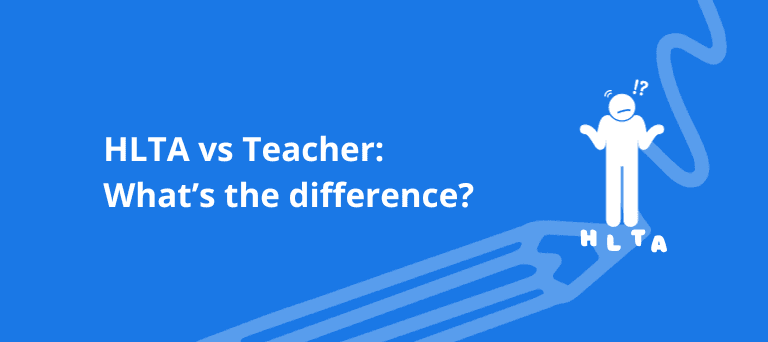Zen Educate Content Team
23 Jan 2024
5
min read

In the realm of the classroom, it can sometimes be challenging to differentiate between various roles within a school environment. Two such roles are that of a teacher and a Higher Level Teaching Assistant (HLTA).
Although these roles are interconnected, they have distinct responsibilities and qualifications. In this article, we will explore the characteristics of each role, focusing on the HLTA Level 4 qualification and how teachers and HLTAs work together to enhance the student experience in schools.
Whether you're interviewing for your first HLTA role or a curious parent/carer, we've got your questions covered in this guide!
Understanding the Role of a Teacher
A teacher's primary responsibility is to plan and execute lessons that facilitate student learning in accordance with curriculum. They are responsible for delivering lessons in a specific subject area, ensuring that students engage with and the material.
Teachers also play a crucial role in monitoring and evaluating student progress, providing feedback, and differentiated material to meet individual students' needs. Additionally, teachers often assume pastoral responsibilities, caring for students' well-being and guiding them beyond academic pursuits.
To become a teacher, you must have a degree-level education followed by teacher training, such as a Postgraduate Certificate in Education (PGCE) in the UK or similar qualifications worldwide.
The Role of a Higher Level Teaching Assistant (HLTA)
A Higher Level Teaching Assistant (HLTA), on the other hand, provides expanded support that goes beyond the routine responsibilities of a Teaching Assistant. While working under the guidance of a teacher, HLTAs can independently conduct lessons and carry out delegated responsibilities, such as assisting with lesson planning, delivery, and marking.
Therefore, HLTAs often have a closer working relationship with students, providing support to individuals or small groups during learning activities and complementing the teacher's broader instructional strategies. They also assist in managing classroom behaviour and ensuring a conducive learning environment. Importantly, HLTAs work towards meeting the specific needs of students who require additional support, help implement individualised learning plans, and provide valuable insights on student progress.
The primary qualification for an HLTA is the Level 4 Certificate for Higher Level Teaching Assistants or the HLTA Level 4 Certification. This qualification equips HLTAs with comprehensive knowledge about education policy, child development, and curriculum implementation, enabling them to perform their roles effectively. You don't, however, need to have this to become an HLTA – but it will certainly help!



